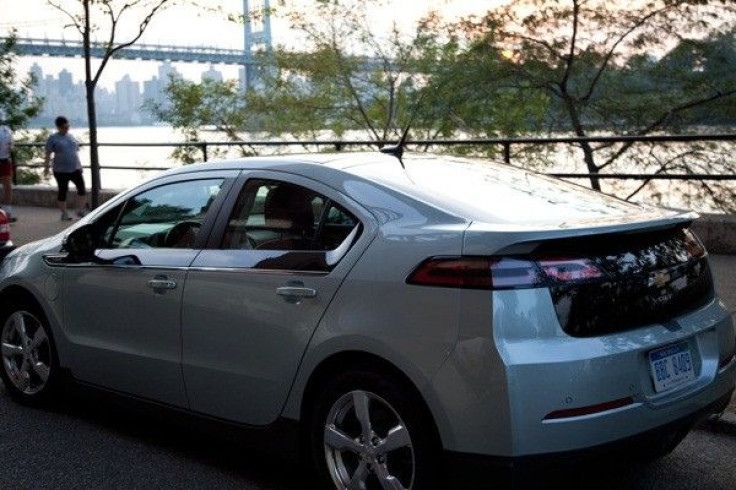Me, My Chevy Volt, and Irene: How GM's Electric Hybrid Handled a Hurricane (VIDEO)
ANALYSIS: 2011 Chevrolet Volt

After learning that I'd finally get my hands on the 2011 Chevrolet Volt for days of test driving -- but during the weekend of Hurricane Irene's assault on the East Coast -- major concerns filled my head.
After all, I work in New York and live in New Jersey, and just as I was handed the car hurricane warnings were being posted for the region.
Questions ranged from the dumb -- Am I more at risk to be hit by lightning driving an electric car? -- to the important -- What happens if the power goes out and I can't charge the Volt?
Although it's been maligned by some in the past for being a hybrid and not a total electric car like Nissan's Leaf -- the impact from Hurricane Irene solved that very point for me. If some see the Volt's hybrid engine as a weakness, we don't see eye-to-eye. (Read: the best thing about this car might be that unlike the Leaf, it's capable of running on both electric and gas power.)
The Volt gets about 40 miles on its lithium-ion battery and then it shifts to gas power. The car seamlessly shifts to gas when the battery runs out -- it barely elicits a noise -- allowing you to continue on your travels without missing a beat.
That seamless transition, and knowing that I had a gas back-up should the battery die, was extremely important this weekend during Hurricane Irene. That gas engine became the ultimate back-up plan, the makes you sleep easy at night-type fallback.
When fully charged the Volt gave me a range of more than 350 miles -- much more than the all-electric Nissan Leaf range of 100 miles. And I can assure you those extra miles came in handy during my weekend on the Jersey Shore.
I knew that I had the ability to drive a great distance if forced to evacuate -- thankfully, I wasn't -- while also not having to worry about finding an electric plug-in along the way. I didn't have to worry that I wouldn't be able to leave my house if the power went out -- it's been out for over a day now -- but instead could continue on my way through the gas back-up.
Not only was it an incredible reassurance to know that I could rely on gas if the electric battery died, but the car also handled the storm perfectly. The Volt has a good center of gravity and weight to it because of the battery through the middle of the car. The Volt handled extremely well in torrential rains and wind gusts upward of 60 mph on Saturday night, allowing me to navigate the Jersey Shore region with little concern.
I had OnStar -- standard in all GM cars -- ready whenever in case it became too difficult for me to drive or if I needed a way around roadblocks popping up all along the Shore. The back hatch area of the Volt did make it a little difficult to see out the back, but that's only a minor quibble.
The center console also helped in my navigation through the storm. Its rear proximity sensor, which shows video and beeps as you back up, was invaluable as I drove around the area the next day trying to survey the damage. It gave me a better view of my surroundings so I could avoid the array of branches and tree trunks scattered through the area.
This car certainly isn't cheap -- it retails for more than $40,000 -- but if you are looking for a car with better mileage and a connection to the future, this just might be your best choice. It offers electric plug-in technology while also giving you that gas back-up in times of real need. Also, buyers can get tax-incentive kickbacks, effectively reducing the price by thousands.
I'd certainly like to see the electric range improve a bit from its current 40 miles, but I'm sure that will be a consideration in future Volt cars. Overall, though, the Volt provides entry into the new world of electric cars while also giving you that steady back-up of gas, if necessary.
And during a hurricane or an earthquake, knowing that one can just fall back on that gas power and not worry about finding an charging station makes a huge difference.
© Copyright IBTimes 2024. All rights reserved.











